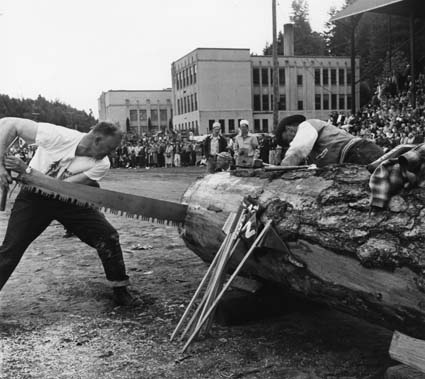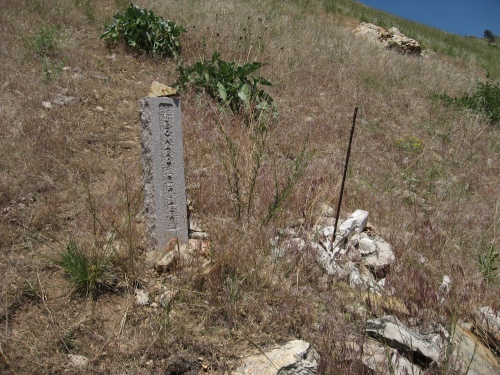This past weekend saw the Lumberjack World Championships take place in Hayward, Wisconsin. The annual event of sawing, chopping, climbing, and log rolling contests celebrated its 50th anniversary this year. While the golden anniversary is cause for celebration, signs of the sport’s decline in popularity seemed to be more evident than ever. A New York Times article covering the championships addressed this issue, noting the lack of television coverage and the drop in participation levels. The number of big-time contests held in the U.S. has also dwindled. It’s now virtually impossible to make a living from winnings on the American lumberjack contest circuit.
For decades the Lumberjack World Championships were a featured television event — from ABC’s “Wide World of Sports” in the early years, to ESPN and the Outdoor Life Network more recently. That all ended this year, when the event was given no national TV coverage. Some former champions are questioning whether the lumberjack sports themselves are dying. “The best years are gone,” seemed to be a common refrain. While the glory years of the sport may in fact be behind us, there are still many talented young lumberjack athletes — such as J.R. Salzman, an Iraq war veteran who lost part of his arm to a roadside bomb in 2006, and returned this year to win his seventh log rolling championship.
With others looking towards the past, though, this is the perfect time to highlight some of the visual documentations of lumberjack competitions from yesteryear found in the FHS Archives. Below is a small sampling of images documenting the sport’s past, as well as some of the larger-than-life figures.

Paul Searls competing in his specialty event, log bucking. Searls was a world champion log bucker from 1932 to 1952, as well as a former Guinness World Record holder in the event. On May 28, 1937, Searls also helped dedicate the Golden Gate Bridge by sawing through a 34″ redwood log in record time at the bridge’s opening.

A three-time International Log Rolling Association Champion and leading competitor from the 1930s through the 1950s, Jim Herron prepares to perform his infamous log rolling striptease as his alter-ego “grandma” character.

Clive McIntosh (right), with partner D. Mann, examining their saw after winning the World Championship Doubles Sawing Contest at Sydney, Australia. McIntosh was an Australian lumberjack legend, as well as an influential axe and saw designer.
The selected photos here come from both the FHS Photograph Collection and the American Forest Institute Records. If interested, also take a look at this 1920-era log rolling film footage from the FHS YouTube Channel, as well as the previously posted Loggers–Rodeos photo subject gallery.
Special thanks to Jeffrey Stine for telling us about the NY Times article that inspired this entry.






